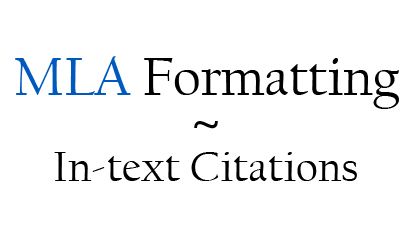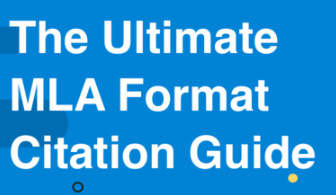MLA in-text citation is unique in its kind as it provides not only the acknowledgment of the author’s work but also point out the exact place you reproduced the information from. Also, such a unique technique makes this format a matter of choice for many scholars as well as teachers as they give a chance to revisit the source of choice and read more about the information cited. To simplify your workflow, try using a mla format template google docs to ensure accuracy and proper structure. Hence, the formatting of such in-text citations has to be learned in order to produce high-quality academic works and get in touch with a scholarly community that prefers to get to the bottom of everything they deal with.
When Should I Use MLA In-Text Citations?

As a fact, you must use in-text citations each time to provide the information reproduced from another source, considering paper formats’ rules. Also, you can acknowledge the information from another author by summarizing, paraphrasing, or quoting it. The MLA citation example is:
- Summary: This book talked about this, this, and this (Last Name Page Number).
- Paraphrase: (in the book) the reason for this is (1), (2), and (3). (Your sentence) The author told that there are various reasons for this, including (2), (1), and (3) (Last Name Page Number).
- Quote: (in the book) the reason for this is (1), (2), and (3). (Your sentence) “The reason for this is (1), (2), and (3)” (Last Name Page Number).
Consequently, as you already figured, (Last Name Page Number) – is the MLA style citation that acknowledges the source. So, within parenthesis, you have to acknowledge last names of all authors involved in the creation of the source you are using while the second part of MLA in-text citation is usually used to acknowledge the page number where the info was taken from. However, you might also acknowledge paragraphs or even lines in cases page numbers are now available in the MLA sample paper. Obviously, for videos, you will acknowledge the time in hh:mm
MLA In-Text Citation With Unknown Author
Sometimes it happens that the article does not have the identified author. However, in such a case, additional rules apply for such MLA in-text citation. Therefore, one has to write the title of the work they use for their purposes, covering how to cite MLA. Hence, the rules for such instances bond you to italicize and put in quotation marks the titles. Additionally, remember to italicize lengthy works, such as books, shows, plays, and put in quotation marks shorter works like a scholarly article. For example:
In-text citation for this page is – (“MLA In-Text Citation” par. 1).
MLA In-Text Citation With 1-2 Authors
Considering the fact that you have to acknowledge each person who contributed to the development of the source you are using, you must list them all in your in-text citation. Therefore, in the cases when there are 1-3 of them, in MLA format citation, you just list them like this:
(Last name #1 and Last Name #2 1).
Cases of 3+ Authors
When you have 4+ authors on your source, use the phrase “et al.” with a period after “al.” The MLA example:
(Last name #1 et al. 1)
What If You Cannot Find Page Numbers?
In the cases when you cannot find the page number for your MLA in-text citation, you must still identify where you took the information from. Therefore, you mist identify paragraphs or even lines where you took your info. If the numbers for paragraph or lines are not available – you must count them by yourself. Examples are:
Pages in MLA – (Turner 1).
Paragraphs in MLA – (Turner par. 1).
Lines in MLA – if the author is Turner, you cite book 5, lines 775-1212 – (Turner 5.775-1212).
How To Mention Author in the Text?
The easiest way to make fewer mistakes with in-text citations is to acknowledge the author inside the text. So, the MLA in-text citation for such case will look like this:
Consequently, the article by Turner explains how to use in-text citations (par. 1).
Block Quotes
In the case you have a huge quote to cite, you might consider block quotations. As a result, MLA in-text citation is put at the end of the whole block after the last punctuation sign. The example is presented below.
Turner said:
The interesting fact about this block quote is that it has to be very, very long so that you can understand that such quotations are pretty rare, but still possible in academic world even thou they look lengthy and unreadable, and, yeah, some people are really lazy not to paraphrase such huge parts of text and just put them as that without understanding on how to cite such passages so that here you go, enjoy the correct example. (par. 1)
Corporate Authors
For the MLA in-text citation that must acknowledge corporations you just assume that the brand you are referring too is the same as the Last Name of the author so that you just copy corporate’s name there.
Multiple Citations
Finally, when one sentence is so stuck with statistics and information that is important to your MLA paper format that you have to cite more than one work, remember to use a semicolon to divide those works from each other in your in-text citation. For example: (Turner 123; Turner, Smith, and Brat 456).


